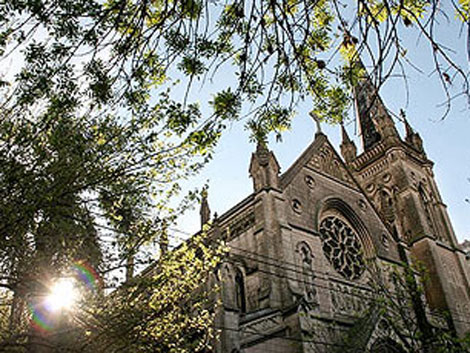
San Cristòbal
Since its early beginnings, San Cristóbal has been the nucleus of numerous important historical events in Buenos Aires. Traditionally, a fusion of local aristocratic families and foreigners, the barrio is recognized for being a cradle of the city’s tango culture. The barrio is bordered by Balvanera, Constitucion, Parque Patricios and Boedo.
An introduction to San Cristóbal
San Cristóbal first came to prominence on June 28th 1869 when the church authorities approved the building of Parroquia San Cristóbal at Avenida Jujuy 1251. At this point the barrio had a population of just over 3,000 who resided in 392 houses. However, it was not until after the construction of the parish church’s temple early in 1884 that San Cristóbal began to grow in esteem. Owing much to the influence of President Julio A. Roca, by 1887 the population had increased to around 37,000 residents distributed between some 3,200 houses.
In its early days over a third of San Cristóbal’s population was foreigners, many of whom were drawn by Plaza Euskara, a sports and recreational area with a 4,000-person capacity. At the turn of the 20th century, this figure had increased to almost half of the residents, namely Italians, Spaniards, Uruguayans and French. This legacy of foreign influence can be seen today in the architecture of the barrio.
Arguably the most notable event to take place in San Cristóbal occurred between January 7th and 14th 1919. Known locally as Semana Tragica (The Tragic Week), anarchist metal workers clashed with nationalist groups after taking control of a workshop and demanding improved working conditions. Although the government accepted the demands, violence broke out which left hundreds dead and thousands wounded.
These days, San Cristóbal is a barrio that, like parts of neighboring Balvanera, goes about its business with little fuss and is characterized by trade and industry.
Things to see, do or both
Lacking the charm of San Nicolas and Monserrat, it is unlikely that you’ll spend a heap of time traversing the streets of San Cristóbal, yet that isn’t to say it is devoid of things to do.
Situated more or less at the geographical center is Parroquia San Cristobal, the parish church from which the barrio was born out of. Then, three blocks west along Avenida San Juan is Plaza Martin Fierro, inaugurated in 1940 at the site of the Semana Tragica tragedy. At the heart of the plaza is a bust of a smiling Zorzal Criollo, one of the aliases of legendary tango singer Carlos Gardel.
For some light entertainment in San Cristóbal, walk a block west from Plaza Martin Fierro to Centro Cultural Julian Centeya. Opened in 2004, the cultural center hosts the Mircrocine Night Film Club which focuses on bizarre cinema. In addition, call ahead to find out about jazz, blues, folkloric and tango events.
Nightlife and restaurants
El Horno del Medio Oriente (Juan de Garay 2501). Thanks to the barrios large foreign immigration is this delectable delicatessen-bakery. Founded by a Syrian family, the bakery is ideal if you want to pick up a snack whilst on the move or to take home. Blending Arabic and Mediterranean flavors, you’ll find delights such as babaganush, Arabian empanadas, tabule salads and falafel to choose from. If you want to try your hand at the culinary form, check the website for recipes.
Bar de Cao (Independencia y Matheu). One of the collection of Buenos Aires’ bares notables, Bar de Cao dates back to 1915 when it was opened by two Asturian brothers, Pepe and Vicente Cao. Maintaining much of its original furnishing, when you take a seat at one of the wooden tables and squint as the sun shines through the tall windows you get the feel of being in Buenos Aires during the early 1900s. The menu offers classic porteño fare, but come for the atmosphere.
Yuki (Pasco 740). Debatably in Congreso yet certainly deserving of a mention is this Japanese restaurant half a block north of Avenida Independencia. Whilst many in BA opt for cheap takeaway sushi, those in the know choose Yuki for authentic Japanese cuisine. Take a seat at the sushi bar or on a tatami mat in the secluded dining area and enjoy freshly prepared traditional dishes or personalized sashimi.
Heladeria Saveiro (San Juan 2816). Reputed ice cream store that has been preparing ice creams and deserts for over a century, supplying to the general public, restaurants and catering companies.
If you are in the mood for classic Argentine fare such as milanesa, empanada and pasta dishes, along Avenida San Juan between Rincon and Comabate de los Pozos streets are a handful of restaurants. Amongst them are Café el Biografo (San Juan 1900), El Rinconcito de San Juan (San Juan 2094) and Miramar (San Juan 1999).
Finalmente
If you are in need of household items, head to Avenida Jujuy where you will find a restaurant supply district, a great place to buy any cooking appliances, equipment and utensils that you might need.
